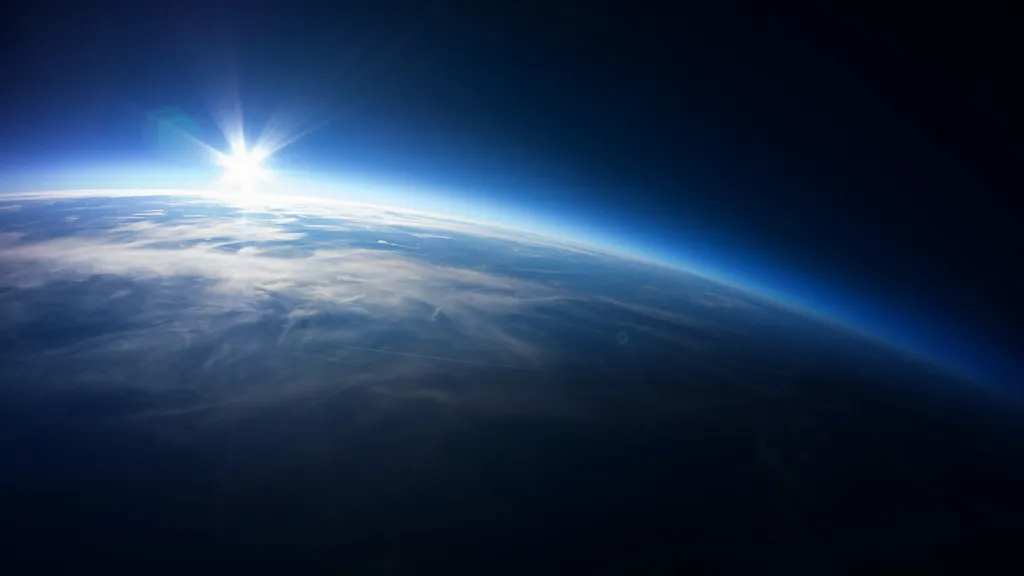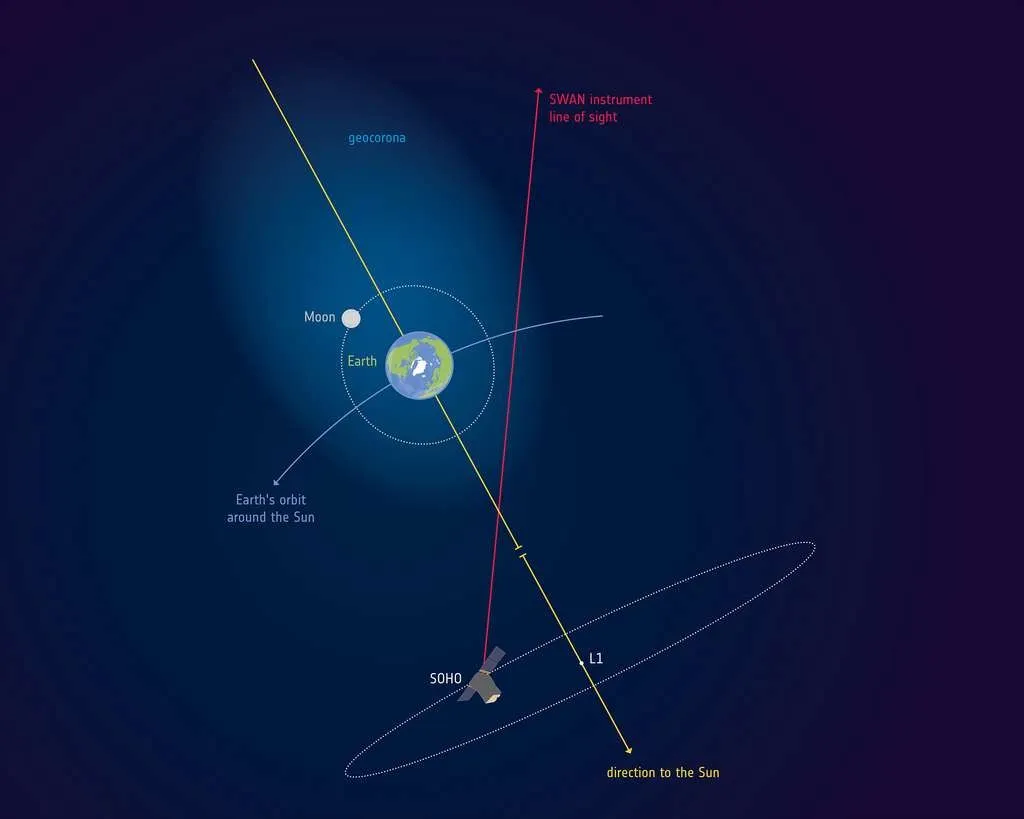Earth's atmosphere extends far beyond the Moon

The Earth's atmosphere is similar, seen from space, to a thin blue film enveloping our planet. It is actually much larger than that.
A Franco-Russian team discovered thanks to the SWAN photometer that the atmosphere of our planet actually extends twice as far as the Moon.
Viewed from space, our atmosphere is like a thin blue ring enveloping our planet. We have long thought that this ring was the limit, that is to say at 100,000 kilometers in altitude. It is not so. Thanks to the SWAN photometer, on board the European Space Agency's SOHO space observatory, a team of Franco-Russian scientists, made up of two French CNRS researchers, has redefined the limits of our atmosphere, going from 100,000 kilometers altitude at 630,000 kilometers. Jean-Loup Bertaux, emeritus researcher at the CNRS and one of the scientists on the mission, was interviewed by National Geographic about this edifying discovery.
AN ATMOSPHERE FINALLY 6 TIMES MORE EXTENDED
Our atmosphere is much larger than we thought . This observation was made possible thanks to the ESA SOHO space observatory located at the Lagrange L1 point, ie 1.5 million kilometers above sea level from our planet in the direction of the Sun. “From this point L1, we see the Earth and its hydrogen atmosphere, the geocorona, in the opposite direction to the sun. It extends over more than 1 million kilometers in diameter” announces Jean-Loup Bertaux. The geocorona is the luminous part of the outermost region of our atmosphere.

The atmosphere encompasses the Moon: it extends twice as far as it.
How is it that there is such a big difference with what we thought until today and the recent observations made by SOHO? This is “thanks to the extreme sensitivity of the SWAN photometer” indicates the researcher, and to the particular color of the hydrogen atoms that make up the atmosphere.
“Everyone knows the orange light of sodium lamps [used in particular in the tunnels of the Paris ring road], characteristic of the sodium atom. In the same way, the hydrogen atom has a characteristic color, located in the far Ultraviolet, called Lyman-al pha at 121.6 nanometers of wavelength, impossible to see from the ground, because absorbed by the atmosphere. But since the space age, it can be observed everywhere, on all planets, in interplanetary space, and even from certain regions of the Galaxy" indicates the researcher, before summarizing: "we knew that the geocorona extended up to about 100,000 km, there it is detected six times further and this thanks to the light emission of these atoms illuminated by the Sun in the ultraviolet”.
?WHAT REALLY CHANGES
“In the geocorona, we are talking about a very low density of hydrogen atoms. 70 atoms per cubic centimeter at a distance of 60,000 km and 0.2 atoms per cubic centimeter at the distance from the Moon and only 0.05 at 630,000 km” specifies Jean-Loup Bertaux. Clearly, the concentration of atoms is so low at its extremities that breathing air on the surface of the Moon is still not an option .
If this discovery is staggering, it changes very little. "It's not going to change much, except one: space telescopes, like the Hubble Space Telescope, at an altitude of 500 km, see this characteristic emission of Hydrogen atoms, which is called Lyman-Alpha radiation, at the UV wavelength of 121.6 nm. So, whatever the direction observed, there is always this emission, in addition to that which comes from the Galaxy. Now, we realize that, even if we put a telescope at the distance of the Moon, it will still have a little of this emission that will have to be subtracted from the UV spectra collected. Space telescopes studying the chemical composition of stars and galaxies will now have to take this interference into account.
Source : websites

